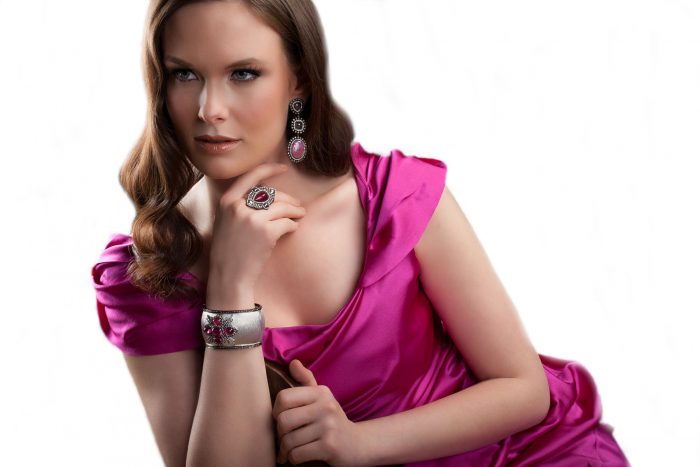Byzantine style in the 21st century

Byzantine art influenced world culture even after the fall of Constantinople. The purest, original form is cultivated to this day – among others in Greece or in … jewelry factories!
No wonder, because in Byzantine art everything – both architecture and painting – is a jewelry, monumental, very decorative. Also typical of the Byzantine-based artists, is the passion for mythological or fantastic motifs, and then Eastern Christianity and iconography, is an inspiration for today’s goldsmiths and fashion designers.
In the latter case (and referring again to the beautiful collection of Silverrushstyle inspired by the art of Sicily under Byzantine influence), iconic painting, derived from a Hellenistic grave portrait, and perfected by Byzantine masters, is particularly tempting. Contemporary designs related to the art of Constantinople are decorated with colorful stones and gold and silver plates – just like the epochal Byzantine icons.
Taken out of the Frames of sacred images or mosaic-inspired portraits of saints also become a spontaneous decorative motif – appearing in the form of prints on skirts, dresses or blouses.

Silver crafts
The Byzantine legacy draws today’s goldsmithery in the most spectacular way. Made in Constantinople, Syria, Cyprus or in the Black Sea, candle and liturgical vessels, censers, relics and, above all, crosses, represent an invaluable inspiration for modern jewelers. Byzantine decorations – heavy bracelets, necklaces, rings, chains or tiaras also have an Influence on the imagination of the goldsmiths.
The jewels of the Byzantine jewelry were decorated with pearls, pomegranates, corundum and beryl. It was stones and minerals that were the most sought after good and popular means of trade on Byzantine-Persia or Byzantine-India. The pearls and grenades of Constantinople were abundant. They did not suffer-as citizens of an ever stronger empire- of a lack of gold. Due to this wealth, Byzantine jewelry was heavy and heavily decorated. The same is true of modern jewelry from the Byzantine trend. Apart from the phenomenal dresses intertwined with gold and decorated with iconographic portraits, there are thick, silver chains, heavy bracelets and hanging, openwork earrings.

The multitude of heavy gold, pearls, rubies, emeralds, garlands made of precious ore and precious stones worn on the neck and shoulders, all reflect the mosaic portrait of the Empress Theodore and constitute an exclusive image of a modern woman with a bit of exaggerated but very spectacular Byzantine style. In a more subdued but equally desirable version, the Byzantine style in the contemporary edition appears in gold crosses worn in the form of ornaments, rings or earrings. Fashionable Byzantine trends are also large rings decorated with oriental symbols or glazed with cloisonné bracelets – covered with colorful enamel and decorated with metal bands.
The elegant, ornate, art-related trend of the Byzantine jewelry is always welcome. The multitude of details, goldsmiths’ ornaments, colorful glass (in economical version) or precious stones (exclusive edition) is a tribute to femininity in the most spectacular edition. Even one jewelry element – made in Byzantine style and symbolizing the decoration of an evening dress – shines in the most desirable manner and makes it difficult to pass by an owner wearing such a ring, tiara, necklace or bracelet just indifferently.
You may also like ...
- How Does A Gemstone Appraisal Work?
- Just How Well Will A Jewelry Cleaning Recipe Work? The Best Methods To Try To Clean Gems At Home
- The Most Valuable Gemstones You Never Knew Existed
- What You Don’t Know About Silver: It’s Antimicrobial?!
- Top Household Jewelry Cleaning Tips For Silver Jewelry
- How to wear ruby jewelry in a stylish way













